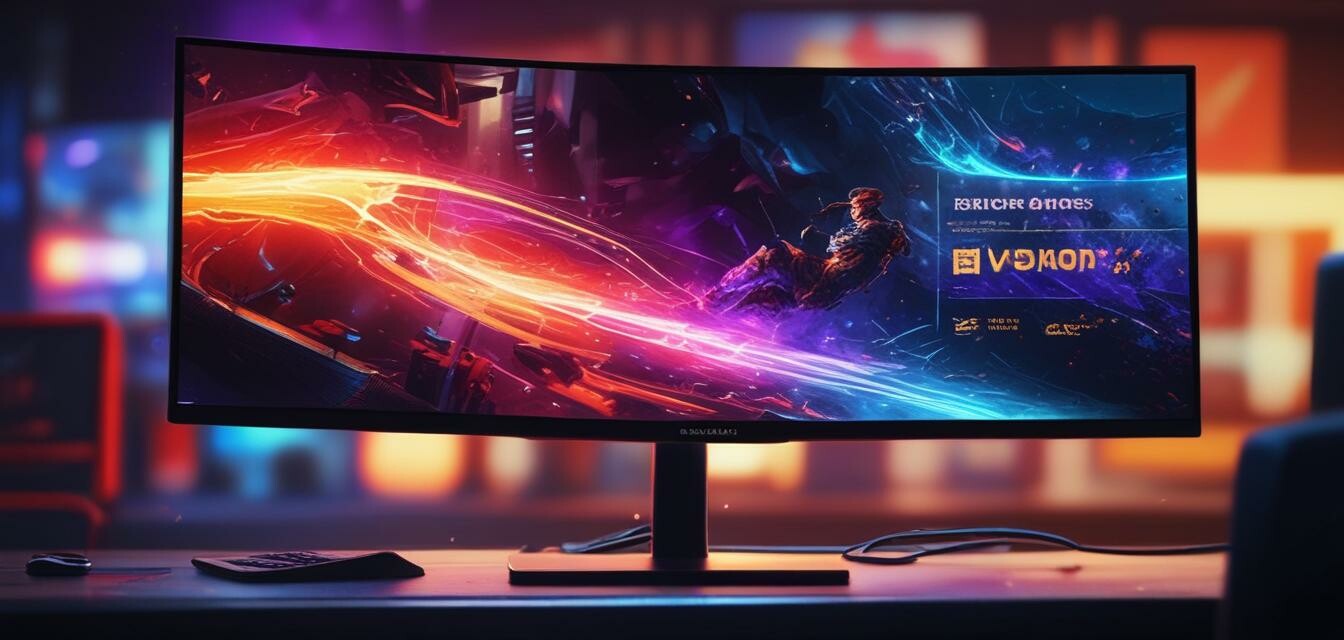
The Rise of OLED Technology in Esports
Key Takeaways
- OLED monitors offer superior contrast, color accuracy, and response times essential for competitive gaming.
- Major esports tournaments are beginning to adopt OLED technology to enhance player performance.
- Price point and availability are improving, making OLED monitors accessible to more gamers.
- As technology evolves, we predict a growing shift towards OLEDs in not only esports but all gaming genres.
In recent years, a significant trend has emerged in the esports realm: the rapid adoption of OLED (Organic Light Emitting Diode) technology in gaming monitors. Once considered a premium option, OLED displays are now becoming the preferred choice among esports professionals. This article delves into how this technology is changing the competitive landscape of gaming and what it means for players and fans alike.
Understanding OLED Technology
OLED technology operates differently from traditional LCDs by using organic compounds that emit light when an electric current is applied. This leads to several distinct advantages:
| Feature | OLED | LCD |
|---|---|---|
| Contrast Ratio | Infinite (true blacks) | Limited (depends on backlighting) |
| Response Time | 0.1 ms | 4-5 ms |
| Color Accuracy | Excellent | Good |
| Viewing Angles | Wide | Narrow |
The Impact on Esports Performance
For professional gamers, every millisecond counts. The need for monitors that can provide immediate feedback and vibrant colors has made OLED a game-changer. Here’s how:
- Faster Response Times: The quick response time of OLED monitors minimizes motion blur, allowing players to react swiftly during high-stakes moments.
- Enhanced Color Accuracy: Bright and accurate colors provide a more immersive experience, helping gamers distinguish critical game elements more easily.
- Better Visibility: True black levels help in reducing eye strain and improve visibility in dark settings often found in games.
Growing Adoption in Esports Events
Major esports events are increasingly using OLED monitors in their setups. This trend signifies a shift in standard operating equipment for competitive play. Here are a few notable examples:
| Event | Year | Monitors Used |
|---|---|---|
| League of Legends World Championship | 2022 | OLED Monitors |
| Overwatch League Finals | 2023 | OLED Monitors |
| Dota 2 The International | 2022 | OLED Monitors |
Challenges Still Remain
Despite their benefits, OLED monitors also face challenges that can impact their widespread adoption:
Pros
- Superior image quality with vibrant colors and deep blacks.
- Instantaneous response times ideal for competitive gaming.
- Reduced risk of motion blur during fast-paced action.
Cons
- Higher cost compared to traditional monitors.
- Potential for burn-in with static images.
- Limited availability in budget-friendly categories.
Future of OLED in Esports
The future looks promising for OLED technology in the gaming industry. As advancements continue to be made, we can expect:
- Improved Affordability: As production techniques evolve, more budget-friendly options will likely become available.
- Enhanced Durability: Manufacturers are focusing on reducing burn-in risks, making OLEDs more reliable.
- Broader Acceptance: With positive results from tournaments and professional endorsements, more casual gamers will adopt OLED tech.
Conclusion
As OLED technology continues to expand its footprint in the gaming monitor market, it is clear that esports professionals are embracing its capabilities for superior performance and visual experiences. The benefits of OLED are driving a significant shift in the competitive landscape of gaming, laying the groundwork for further innovations. With ongoing developments, we can anticipate a future where OLED becomes synonymous with esports gaming.
To learn more about various OLED monitor options suitable for gaming, explore our categories: 4K OLED Gaming Monitors, Budget-Friendly OLED Gaming Monitors, G-Sync & FreeSync OLED Monitors.